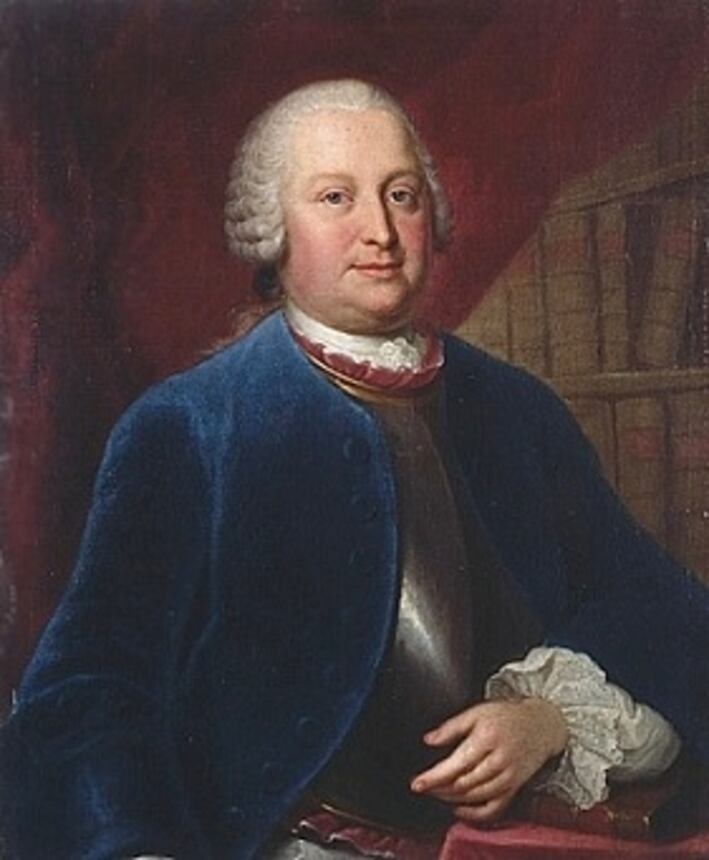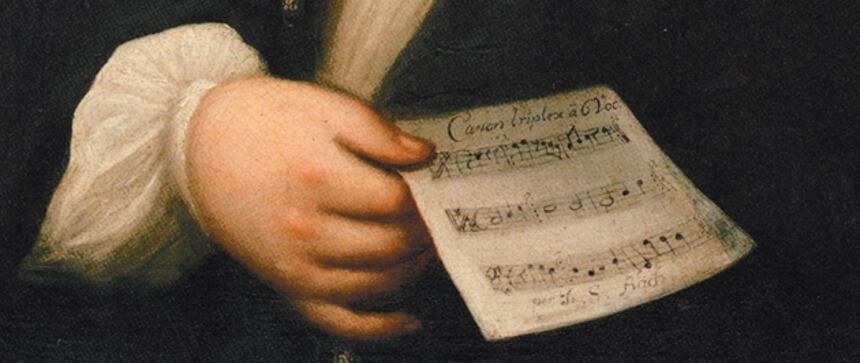We know that Bach was stupefying, but it is generally ignored that his exercises for piano composed for an ARIA of diverse variations for harpsichord and two pianos , as read on the title page of the 1741 edition, were offered as a kind of lullaby by the composer, passing through Dresden, to his patron and friend Count Kayserlingk. The Count, who was an insomniac, asked his house harpsichordist to play him these various variations – perhaps not to send him into the arms of sleep, but, hopefully, at least to brighten up the long, sleepless nights. This was bad luck for the Count, whose name itself did not end up being attached to this eternal score ("the Kayserlingk Variations", it is true, is rather difficult to spell), and it was his young harpsichordist who was given the honour: Johann Gottlieb Goldberg (1727 - 1756, portrait below), who was around thirteen years old then, and had mastered the score brilliantly. Hmmm…
Well, all this was affirmed by Forkel, the first biographer of Bach, in his book from 1802, and the legend is lodged in-between the very true and partial fiction, propped up by a weight of laudanum tablets. The fact remains, though, that the name the "Goldberg Variations" has settled, and it is certainly more memorable to the general public than an alternative title such as Exercises composed on the keyboard, etc.. What makes the whole thing moderately plausible, or at least questionable, is that the edition – closely monitored by Bach himself – has no dedicated name, and if he had dedicated the work, then it would not have been to a harpsichordist of 13 years (who, it is probable, would not have been able to master the work, but hey, let’s move on…) but instead to a proven aristocrat. However, subsequent coverage has destined it to be known as the Variations "by the approval of the mood of the fans". In effect we deal, in the name of Goldberg, with a quasi-romantic name spawned by a biographer, and retained by posterity. All that said, it is no matter!

Until 1974, nothing was really known about the source manuscript of the variations – and it is also true that, since 1974, we have not always had the idea of what can be said about said authority source. But, it was indeed discovered in Strasbourg, a rare copy of the first edition, annotated and corrected by the hand of Bach himself, which provides reasonable evidence that the book corresponds to the intentions of its creator. Best of all, the partition includes – in addition to handwritten notes on tempo, ornamentation, and articulations on the Variations – fourteen canons, all various, on the first eight bass notes of the previous aria, entitled ("Verschiedene Canones über die ersten acht Fundamental=Noten vorheriger Arie"). These were given the number BWV 1087 (the Goldberg Variations were on the number 988). And, an extra amusing details is that one of these canons – devilish in its complexity of design – is reminiscent of the canons of the Musical Offering, which were found casually held in the hands of Bach at the famous table of Haussmann in 1746. This provides evidence that the piece had not remained hidden in a copy lost in Alsace, but had lived on. It is not clear yet where or how, however.
As for the Goldberg Variations themselves, they represent the absolute pinnacle of the art of the variation in time, and Bach has done more for this than anyone. It evokes, more or less, all types that are in use: polonaise, passepied, gigue, minuet, sarabande, trio sonata, fugue, aria, French overture, toccata, lament, stile antico and even a quodlibet, in which he facetiously introduced a few snatches of bawdy songs; in the German style, the Italian, and the French, with a barrage of technical difficulties that give a hard time to pianists and harpsichordists today. All of these three variations, when inserted into a canon, begin with a canon in unison to end with a canon in the ninth interval.

The title page clearly indicates that the partition is aimed at a two-manual harpsichord... pianists and harpsichordists continually tear out their eyes and ears over the virtues of performing on either piano or harpsichord. Some changes may present additional difficulties on the piano, where hands are playing at more or less the same height. The work is usually played on two separate keyboards, as use of piano always permits the risk of salad fingers. That said, some of the world’s greatest pianists – Barenboim, Arrau, Gould, Kempff, Perahia, Schiff, and Weissenberg – have played it on that instrument often – and have done so with an intense kind of happiness. A Japanese site lists more than 550 published recordings of the work including, indeed, all kinds of transcripts (!) of orchestras of all kinds, including organ, accordion, guitar, jazz instruments, synthesizers, rock performances, solo percussion takes, computer transcriptions, and more! (Check it out at http://www.a30a.com/ if you are sceptical; each record is accompanied by a photo of the cover, the labour of love of a titan). If Bach touched on the royalties of these recordings, one can only imagine how rich he would become today…
We salute in passing some new releases - Igor Levit and Alexandre Tharaud first – and a splendid double re-edition, remastered with all its finery, of the legendary recording of Glenn Gould in 1955 and in 1981.